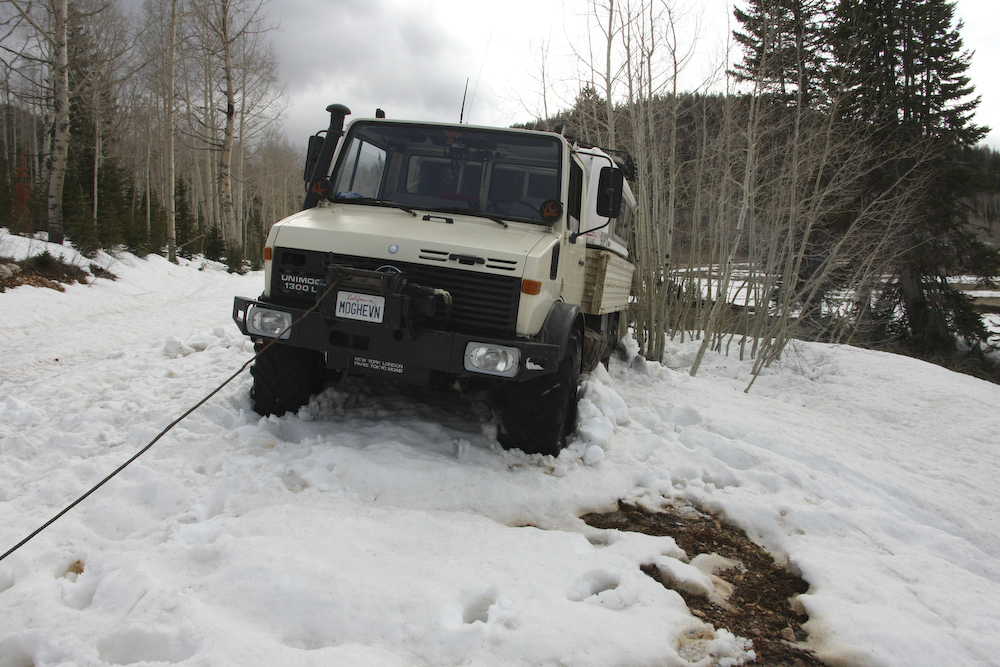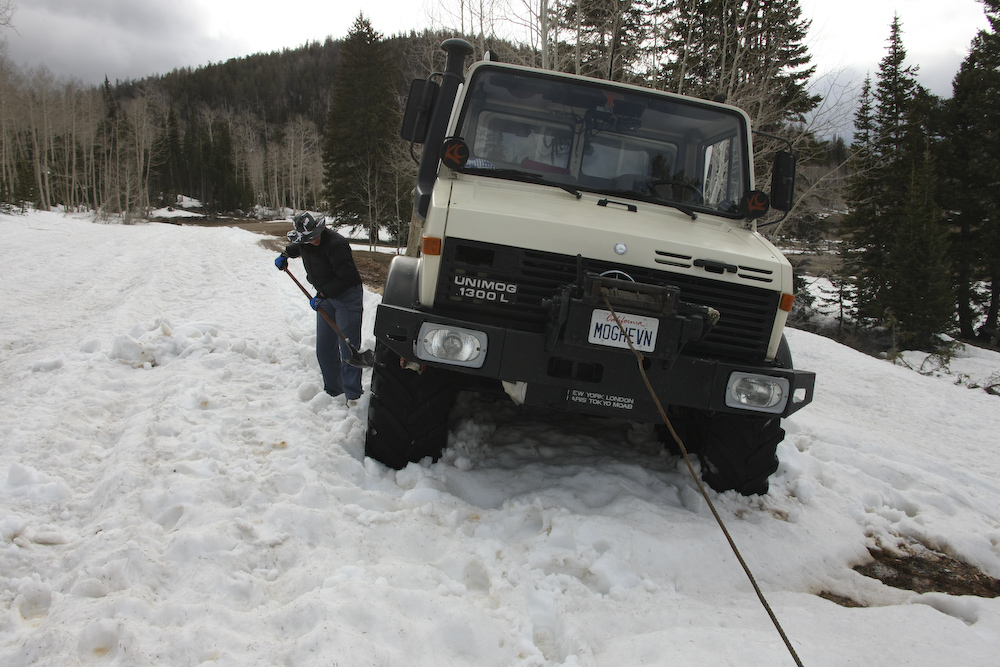Quick Links:
Zen
and Art Home Disclaimer
Errata
Parts and Parts
Vendors
Truck Sales Service
and Repairs
Engine Fuel Hydraulics Radiator and Cooling
Air System Brakes Wheels Tires Electrical
and Batteries
Transmission Clutch
Axles Hubs Body Air
Conditioning
Tools
Safety
Hydraulics
Most folks, myself included, believe that a beefy
winch is a requirement for any hard core four wheeling. In
most cases, assuming there is something to hook the winch cable
to, you can get yourself out. But in the desert southwest
where we live, trees are in short supply. But despite this
fact, we found a beefy hydraulic winch off a electric utility
truck for only $900 so we bought it. Kai fabricated a
heavy duty mount and it was installed on the bumper where it
happily sat for about 5 years until I got the pump and control
unit. Everything except the actual winch and hoses were
stock Mercedes hardware: pump, reservoir, control valves.

The winch was attached many years ago and until the pump and control system was installed, it was just a cool (if heavy) bumper ornament. The hoses to the pump and control system are installed and tightened.

The 1300 was designed as a working truck and had a spot for the
20 liter hydraulic reservoir built in. All we had to do
was locate the correct reservoir and bolt it down. We only
put a small amount of fluid in it as the winch did not need
much, unlike a piston. The radiator in the mog is offset
to the opposite side to allow room for the hydraulics.

The hydraulic pump is mounted in a pocket below the frame and is driven by dual belts.

The controls for the winch are the lever with the red lock-out
ring. Pull the ring up to unlock the control stick.
Pull the stick toward you for spool in and away for spool out.
We actually had occasion to use the winch on several trips. The photos below show those stories.

After perhaps 40 miles of dirt road in southern Utah, we passed beyond the nearly 10,000 foot Navajo Peak. The road was on the north side of the ridge, and therefore was shaded from the action of the sun resulting in substantial snow banks. We attempted to navigate through the shallow part of the drifts, but the lip of the roadway collapsed due to the wet soil. We slipped sideways and we headed no way but down. So, we hooked up the winch and prepared for an extraction. We were the first vehicles through this area, so we had to bust through many snow banks to get this far. Plus, our map showed that we were just a few kilometers from the main road, so the urge to continue on was strong. It was late in the day, getting cold and a 40 mile back-track would have been no fun. So, we pressed on.

Kathleen
gets up close and personal with Mr. Shovel, clearing the tire
path before the extraction. The winch worked great and while
we did slip down the face quite a bit before we were able to
gain traction, it was a pretty easy job. That said, after we
rounded the next point on the road, we had to retreat anyway.
The next set of snow banks were too deep and appeared to
continue for at least a kilometer. I guess in retrospect,
given that we were at 9200 feet, we should have anticipated
this, but the locals told us that the road was clear. But,
independent of what they said, we decided to turn back. As
luck would have it, we got stuck again in the same spot as the
first time. This was a more difficult extraction, but we were
able to accomplish it in about 30 minutes.

My 1300L acted as the pull-point, but to make the full pull, it required cable from both my winch and Kai's to reach the 600 feet down the dune where they were stuck.
Quick Links:
Zen
and Art Home Disclaimer
Errata Parts and Parts
Vendors
Truck Sales Service
and Repairs
Engine Fuel Hydraulics Radiator and Cooling
Air System Brakes Wheels Tires Electrical
and Batteries